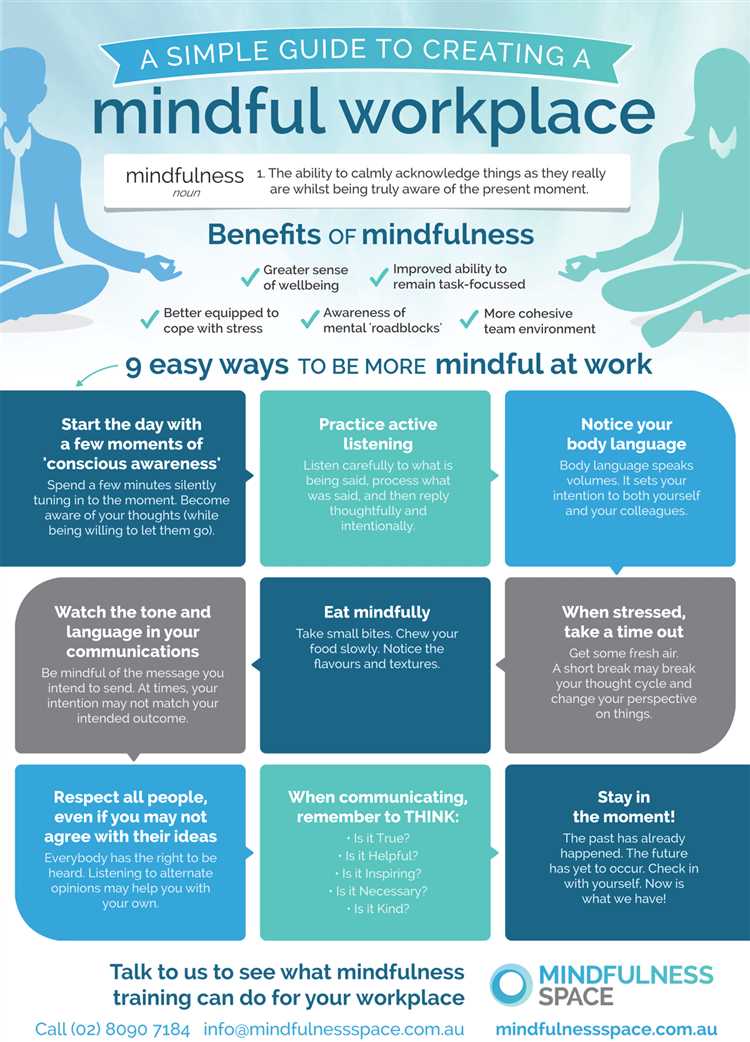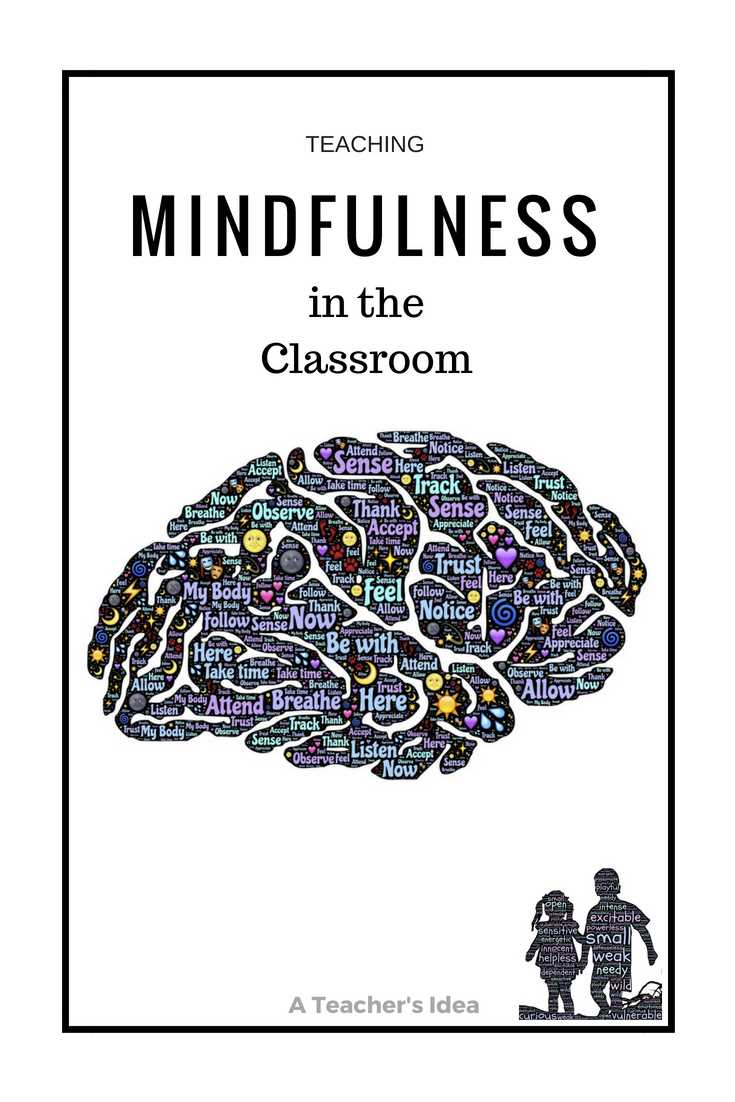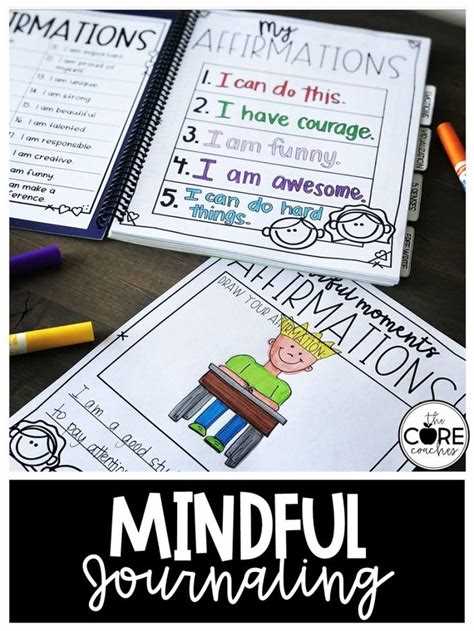In today’s fast-paced and information-overloaded world, it can be challenging for students to stay focused and emotionally balanced. The constant distractions and pressures can hinder their ability to concentrate and navigate their emotions effectively. However, introducing mindfulness activities in the classroom can provide students with a toolkit to enhance their focus and emotional well-being.
Mindfulness is the practice of paying attention to the present moment with non-judgmental awareness. It involves redirecting our attention away from worries about the past or future and focusing on what is happening right now. By incorporating mindfulness activities into the daily routine, teachers can help students develop valuable skills that will benefit them academically as well as in their personal lives.
One key aspect of mindfulness is cultivating awareness of the breath. By guiding students through simple breathing exercises, teachers can teach them how to use their breath as an anchor to the present moment. This can help calm their minds, reduce stress levels, and improve their ability to concentrate on tasks at hand.
Another mindfulness activity that can enhance focus and emotional well-being is guided meditation. Teachers can lead students through short guided meditations that encourage them to focus on their bodies and sensations. This practice allows students to connect with their physical selves and develop a sense of groundedness and self-awareness.
Benefits of Mindfulness in the Classroom
Mindfulness is a practice that involves paying attention to the present moment in a non-judgmental and compassionate way. It has gained popularity in recent years due to its numerous benefits, especially in the classroom setting. Incorporating mindfulness activities into the classroom can have a profound impact on students’ focus and emotional well-being. Here are some of the key benefits of mindfulness in the classroom:
- Improved Focus: Mindfulness exercises help students train their attention and concentration, enabling them to stay more focused on the task at hand. By learning to bring their attention back to the present moment whenever it wanders, students can enhance their ability to concentrate on academic tasks.
- Reduced Stress: Mindfulness practices can help students manage stress and anxiety. By teaching them to observe their thoughts and emotions without judgment, mindfulness empowers students to develop a greater sense of self-awareness and resilience in the face of stressors. This can lead to a reduction in stress levels, resulting in a more positive and calm classroom environment.
- Enhanced Emotional Regulation: Mindfulness encourages students to recognize and regulate their emotions in a healthy way. By practicing techniques such as deep breathing or body scans, students can learn to become more aware of their emotional states and respond to them in a calm and balanced manner. This can lead to improved emotional intelligence and better interpersonal relationships.
- Improved Cognitive Skills: Mindfulness exercises have been shown to enhance cognitive skills such as attention, memory, and problem-solving. Regular practice can improve working memory and executive functioning, leading to better academic performance and overall cognitive development.
- Increase Self-Compassion: Mindfulness cultivates self-compassion, which is crucial for students’ overall well-being and resilience. By promoting self-acceptance and self-kindness, mindfulness helps students develop a positive and compassionate self-image, enhancing their self-esteem and confidence.
Incorporating mindfulness activities in the classroom can have significant benefits for both students and teachers. By promoting focus, emotional well-being, and self-awareness, mindfulness can create a positive and nurturing learning environment where students can thrive and reach their full potential.
Mindful Breathing Exercises
Mindful breathing exercises are a great way to help students enhance their focus and emotional well-being. These exercises involve paying attention to the breath as it goes in and out of the body, and can be done at any time throughout the day.
Here are a few simple mindful breathing exercises you can introduce to your classroom:
- Belly Breathing: Have students sit or lie down in a comfortable position. Ask them to place one hand on their belly and the other on their chest. Instruct them to take a deep breath in through their nose, feeling their belly rise as they fill their lungs with air. Then, have them exhale slowly through their mouth, feeling their belly fall. Encourage students to focus their attention on the sensation of their breath as it moves in and out of their body.
- Counting Breath: Instruct students to take a deep breath in through their nose, and as they exhale through their mouth, have them silently count to four. Have them repeat this process several times. This exercise helps students focus their attention on their breath and helps calm their mind.
- 5-4-3-2-1 Technique: This technique is helpful for grounding students in the present moment and reducing stress. Instruct students to take a deep breath in through their nose, and as they exhale, have them identify and silently count five things they can see, four things they can feel, three things they can hear, two things they can smell, and one thing they can taste. This exercise engages multiple senses and helps bring students into the present moment.
These mindful breathing exercises can be done for just a few minutes each day and can have a significant impact on students’ focus and well-being. Encourage your students to practice these exercises whenever they need a moment to center themselves or whenever they feel stressed or overwhelmed.
Body Scan Meditation
Body scan meditation is a mindfulness practice that involves systematically bringing attention to different parts of the body, starting from the top of the head and moving down to the toes. The purpose of this meditation is to cultivate awareness of bodily sensations and to develop a deep sense of relaxation and connection with the body.
Here is a step-by-step guide to practicing body scan meditation:
- Find a quiet and comfortable space: Choose a space where you can sit or lie down comfortably without distractions.
- Get into a comfortable posture: Sit or lie down in a position that allows you to remain still and relaxed for the duration of the meditation.
- Close your eyes: Closing your eyes helps to reduce external distractions and allows you to direct your attention inward.
- Bring your attention to the top of your head: Start by taking a few deep breaths and bringing your awareness to the top of your head. Notice any sensations or tension in this area.
- Scan your body from head to toe: Slowly move your attention down through your body, noticing any sensations or areas of tension as you go. Take your time and be fully present with each part of your body.
- Release tension: As you come across areas of tension, imagine sending your breath to those areas and allowing them to release and relax.
- Notice any emotions or thoughts: As you scan your body, you may notice emotions or thoughts arising. Acknowledge them without judgment and gently bring your focus back to the body.
- Complete the scan: Continue scanning your body until you reach your toes, taking note of any sensations or feelings that arise along the way.
- Take a few moments: After completing the body scan, take a few moments to simply be present and observe any changes or sensations in your body.
- Gently bring your attention back: When you are ready, slowly bring your awareness back to the present moment, allowing any lingering relaxation to stay with you as you continue with your day.
Body scan meditation can be practiced for as little as a few minutes or as long as an hour, depending on your preference and availability of time. It is a great practice to incorporate into your daily routine to enhance focus, reduce stress, and promote overall emotional well-being.
Mindful Listening Activities
Mindful listening activities are a great way to help students develop their focus and attention skills while also promoting emotional well-being. These activities encourage students to be present in the moment and fully engage with the sounds they are hearing.
1. Sound Scavenger Hunt: Create a list of different sounds for students to listen for in their environment. It could include natural sounds like birds chirping or leaves rustling, as well as man-made sounds like a car horn or a doorbell. Have students go outside and try to find each sound on the list. Encourage them to listen carefully and focus on the unique qualities of each sound.
2. Guided Listening Meditation: Play a short piece of instrumental music and have students close their eyes and focus on the sounds they are hearing. Encourage them to notice the different instruments, rhythms, and melodies in the music. After the meditation, have a discussion about how they felt during the activity and what they noticed about the music.
3. Mindful Bell Exercise: Use a small bell or chime and ask students to listen carefully until they can no longer hear the sound. Have them raise their hand when they can no longer hear the sound. This activity helps students practice focused attention and develop their listening skills.
4. Sound Storytelling: Play a recording of a story or sound effects and have students close their eyes and listen. Once the recording is finished, have students share what they heard and how it made them feel. This activity helps students develop their listening comprehension skills while also encouraging them to reflect on their emotions.
5. Sound Circle: Have students sit in a circle and take turns making a sound with an object, like tapping a cup or shaking a maraca. The rest of the students should close their eyes and focus on the sound. After each student makes a sound, have a discussion about what they noticed and how it made them feel.
These mindful listening activities can be easily incorporated into the classroom routine and provide students with valuable opportunities to enhance their focus, attention, and emotional well-being.
Mindful Movement and Yoga
Incorporating mindful movement and yoga into the classroom can have numerous benefits for students’ focus and emotional well-being. These practices help students develop body awareness, improve mental clarity, and reduce stress. Here are some ways to introduce mindful movement and yoga in the classroom:
- Start with simple stretching exercises: Begin each class with a few minutes of gentle stretching to help students connect with their bodies and release tension.
- Practice mindful walking: Take the class outside for a mindful walking exercise. Encourage students to focus on their breath and the sensation of their feet touching the ground with each step.
- Teach basic yoga poses: Introduce students to simple yoga poses such as Mountain Pose, Tree Pose, and Child’s Pose. Guide them through the poses, encouraging them to pay attention to their breath and any sensations in their bodies.
- Use guided meditation: Incorporate guided meditation into your mindful movement sessions. Lead students through a visualization exercise where they imagine themselves in a peaceful, natural setting.
- Encourage journaling: After each mindful movement session, give students a few minutes to reflect on their experience in a journal. Ask them to write down any thoughts or feelings that arose during the practice.
- Create a calm corner: Designate a corner of the classroom as a calm and quiet space where students can go to practice mindful movement or yoga whenever they need a break.
- Invite guest instructors: Bring in a yoga instructor or mindfulness expert to lead a class or workshop with the students. This can provide a fresh perspective and deepen their understanding of these practices.
Remember, it’s important to create a safe and non-judgmental environment for students to explore mindful movement and yoga. Encourage students to listen to their bodies and respect their own limitations. With consistent practice, these activities can become valuable tools for students to enhance their focus and emotional well-being.
Gratitude Practices
Practicing gratitude can have a profound effect on our mental and emotional well-being. It helps us shift our focus from negative thoughts and experiences to positive ones, leading to increased happiness and contentment. Incorporating gratitude practices into the classroom can create a positive and supportive environment that fosters emotional well-being. Here are some gratitude activities you can try:
Gratitude Journal
Provide each student with a notebook or journal where they can write down things they are grateful for. Encourage them to write in their journal regularly, whether it’s daily, weekly, or whenever they feel inspired. This activity helps students develop a habit of noticing and appreciating the positive aspects of their lives.
Gratitude Circle
Gather the students in a circle and take turns sharing something they are grateful for. Encourage students to be specific and explain why they are grateful for that particular thing. This activity helps create a sense of community and connection among the students as they learn about each other’s experiences and perspectives.
Gratitude Letters
Have students write letters expressing gratitude to someone in their lives who has made a positive impact. This could be a teacher, parent, friend, or anyone they feel grateful for. Encourage students to be sincere and specific in their letters, expressing their appreciation and the reasons behind it. They can choose whether to give the letters or keep them as personal reflections.
Gratitude Jar
Create a gratitude jar in the classroom where students can write down things they are grateful for on slips of paper. Encourage them to add to the jar whenever they think of something to be grateful for. At the end of each week or month, take out the slips of paper and read them aloud as a reminder of all the positive things in their lives.
Gratitude Tablecloth
Find a white tablecloth and provide fabric markers or fabric paint. Before a special event or celebration, ask students to write down what they are grateful for on the tablecloth. This activity serves as a visual reminder of gratitude and can be reused for future events, with new additions each time.
Gratitude Discussion
Allocate time for gratitude discussions where students can openly share what they are grateful for. This could be done in small groups or as a whole class discussion. Encourage students to actively listen to each other and express their appreciation for the shared experiences.
These gratitude practices can help students develop a positive mindset, enhance their well-being, and create a supportive classroom environment. By incorporating gratitude into their daily lives, students can cultivate a greater sense of happiness and empathy towards others.
Creating a Mindful Classroom Environment
A mindful classroom environment is essential for enhancing focus and emotional well-being among students. By creating a space that supports mindfulness, teachers can help students develop important skills such as self-awareness, self-regulation, and empathy. Here are some strategies for creating a mindful classroom environment:
- Set the tone: Begin each day with a mindful moment, such as a brief breathing exercise or a few minutes of guided meditation. This helps students transition into a focused and calm state of mind.
- Create a cozy space: Designate a corner of the classroom as a mindfulness area. Fill it with comfortable pillows, soft lighting, and calming resources like coloring books or stress balls. This provides a safe and relaxing space for students to retreat to when they need a moment to regroup.
- Teach mindful listening: Encourage students to actively listen to each other during class discussions. This means giving their full attention, maintaining eye contact, and being present in the moment. Modeling this behavior as a teacher can help set expectations for the class.
- Practice gratitude: Incorporate gratitude activities into the daily routine. For example, begin or end each class with a gratitude circle, where students take turns expressing something they are thankful for. This helps cultivate a positive and appreciative mindset.
- Use visual cues: Display visual reminders of mindfulness throughout the classroom. This can include posters with mindfulness quotes or keywords, as well as calming imagery like nature scenes or peaceful artwork. These visual cues serve as gentle reminders to be present and mindful.
- Offer choice and autonomy: Give students the opportunity to choose mindfulness activities that resonate with them. This can involve offering a variety of options, such as guided meditations, mindful coloring, or journaling. Allowing students to choose what works best for them empowers them to take ownership of their own mindfulness practice.
- Integrate movement breaks: Incorporate short movement breaks throughout the day to help students release physical tension and restore focus. This can include stretching exercises, yoga poses, or simple mindfulness walk-arounds. Movement breaks promote body awareness and enhance the mind-body connection.
By implementing these strategies, teachers can create a supportive and nurturing classroom environment that fosters mindfulness and emotional well-being. This sets the stage for students to thrive academically and personally.
Questions and answers
How can mindfulness activities enhance focus in the classroom?
Mindfulness activities help students become more present and aware of their thoughts and emotions, which can improve their ability to focus and concentrate on tasks.
What are some examples of mindfulness activities that can be used in the classroom?
Some examples of mindfulness activities for the classroom include deep breathing exercises, guided visualization, body scans, and mindful walking.
Can mindfulness activities help improve emotional well-being in the classroom?
Yes, mindfulness activities can help improve emotional well-being in the classroom by giving students tools to manage stress and regulate their emotions.
Are there any studies that show the benefits of mindfulness activities in the classroom?
Yes, there have been studies that show the benefits of mindfulness activities in the classroom, such as improved attention span, reduced stress levels, and increased emotional regulation.
How can teachers incorporate mindfulness activities into their daily classroom routine?
Teachers can incorporate mindfulness activities into their daily classroom routine by starting the day with a mindfulness practice, incorporating short mindfulness breaks throughout the day, and providing resources for students to practice mindfulness on their own.


